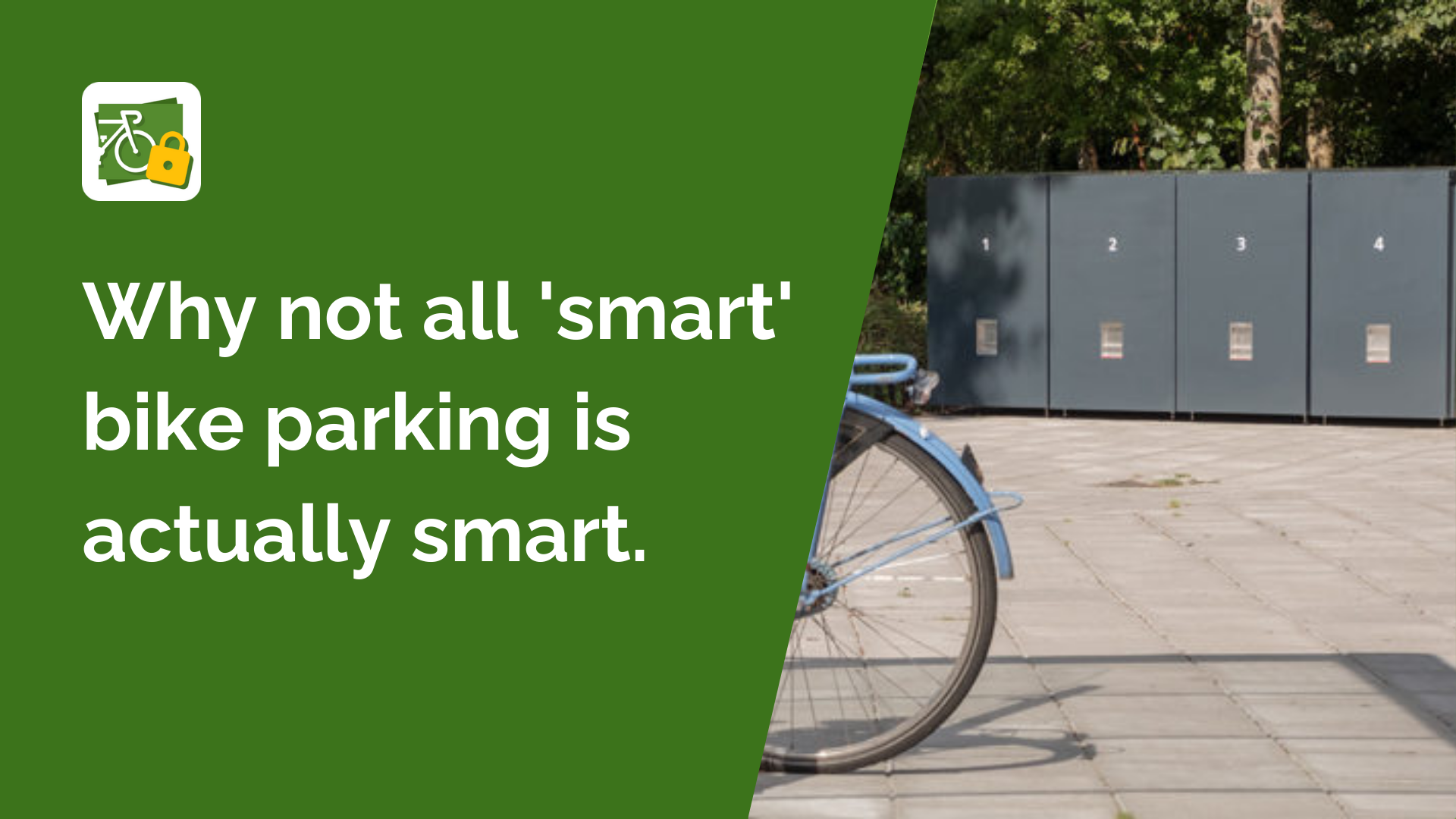Why not all 'smart' bike parking is actually smart
By Julia Greijdanus on February 11, 2025

The term "smart" gets tossed around a lot in the tech world, especially when it comes to bike parking solutions. But just because a system is labeled as "smart" doesn’t necessarily mean it delivers. Let’s take a closer look at what truly makes a bike parking system smart—and why many current offerings fall short.
1. Real-time occupancy tracking
A key feature of any smart bike parking system is the ability to track real-time occupancy. This lets cyclists know which parking spots are available before they even get there. Ideally, real-time tracking should be accessible via an app, making it easy to see open spots in real-time.
Unfortunately, many systems still rely on outdated or manual tracking, resulting in inaccurate or stale data. Cyclists may find themselves heading to a spot that’s already full, wasting valuable time. This frustration can lead to abandoned trips, which ultimately defeats the purpose of a smart system.
A truly smart system should offer accurate, real-time data, ensuring cyclists know exactly where they can park before they arrive. This not only saves time but also makes the entire parking experience much smoother.
2. User-friendly apps
A smart bike parking system isn’t complete without an intuitive app. The app should allow cyclists to easily reserve spots, get real-time updates, and access additional features like payment options or security alerts.
Yet, many apps are still overly complicated or prone to glitches. A clunky app won’t do much good—if cyclists can’t figure out how to navigate it or run into technical issues, they’re likely to abandon it.
A good app should feel natural to use. It should simplify the parking process, not add extra hassle. When the app works seamlessly, cyclists are more likely to trust the system and use it regularly.
3. Automated security features
Bike theft is one of the biggest concerns for cyclists. If a smart parking system doesn’t provide adequate security, it’s doing more harm than good. A truly smart bike parking solution should have automated security features, such as remote-locking mechanisms, to ensure bikes are securely locked when not in use.
If security is left to the user’s discretion or isn’t integrated well into the system, cyclists will still worry about theft. Automated security systems create peace of mind, which is crucial for a smart system’s success.
By incorporating remote-locking systems and possibly even surveillance cameras or sensors, a smart parking system can give cyclists confidence that their bikes are safe and secure.
4. Integration with city infrastructure
Smart bike parking systems are most effective when they’re part of a larger, connected urban ecosystem. For example, bike lockers near public transport hubs, such as train or bus stations, make it easier for cyclists to switch to other forms of transportation.
Too many systems, however, focus solely on bike parking, ignoring the larger urban transport context. They’re often placed far from key destinations like transit hubs, workplaces, or bike-sharing stations, missing a key opportunity to improve bike commuting.
For a system to truly benefit cyclists and the city, it needs to be integrated with other modes of transport. By placing bike parking near transport hubs and bike-sharing stations, cities can encourage seamless transitions between biking and public transport, reducing congestion and promoting sustainable mobility.
Let’s actually make it smart
While many systems claim to be “smart,” the real difference lies in how well they meet the needs of cyclists and cities. It’s not about flashy technology for the sake of it—it’s about making biking easier, safer, and more convenient for the user, while supporting the broader goals of sustainable urban mobility.
At ParkMyBike, we’re committed to making bike parking truly smart. By combining advanced technology, an intuitive user experience, and robust security, we’re creating solutions that meet today’s needs and pave the way for a smarter, more sustainable future.
Other recent blog posts

Bicycle parking software: Should you build or buy?
As a manufacturer of bike parking solutions, you face a choice: develop software in-house or outsource it? Discover the pros and cons in this article.

Smart bicycle parking in 2025: What to expect
In this blog, we share how technology, sustainability, and smart solutions will shape the industry in the coming years.